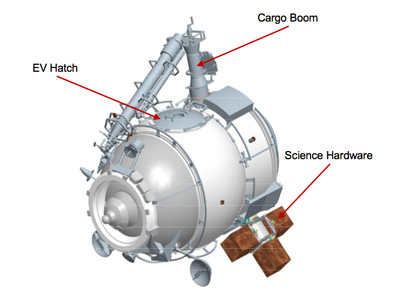|
Mini-Research Module (other)
A Mini-Research Module (MRM; russian: Малый исследовательский модуль, , MIM) is one of the two pressurised modules of the Russian Orbital Segment of the International Space Station. They are the following: * ''Poisk'' (MRM-2) * ''Rassvet'' (MRM-1) See also * Research station {{set index article ... [...More Info...] [...Related Items...] OR: [Wikipedia] [Google] [Baidu] |
Russian Orbital Segment
The Russian Orbital Segment (ROS) is the name given to the components of the International Space Station (ISS) constructed in Russia and operated by the Russian Roscosmos. The ROS handles Guidance, Navigation, and Control for the entire Station. Current composition The segment currently consists of six modules, which together essentially comprise the base configuration of the cancelled Russian space station ''Mir''-2. The segment is controlled directly from Roskosmos's Mission Control Center in Moscow. The six modules are (in order of launch): * '' Zarya'' (dawn) * ''Zvezda'' (star) * ''Poisk'' (search) * ''Rassvet'' (sunrise, dawn) * ''Nauka'' (science) * ''Prichal'' (berth) The first module, ''Zarya'', otherwise known as the Functional Cargo Block or FGB, was the first component of the ISS to be launched, and provided the early station configuration with electrical power, storage, propulsion, and navigation guidance, until a short time after the Russian service module ... [...More Info...] [...Related Items...] OR: [Wikipedia] [Google] [Baidu] |
International Space Station
The International Space Station (ISS) is the largest Modular design, modular space station currently in low Earth orbit. It is a multinational collaborative project involving five participating space agencies: NASA (United States), Roscosmos (Russia), JAXA (Japan), European Space Agency, ESA (Europe), and Canadian Space Agency, CSA (Canada). The ownership and use of the space station is established by intergovernmental treaties and agreements. The station serves as a microgravity and space environment research laboratory in which Scientific research on the International Space Station, scientific research is conducted in astrobiology, astronomy, meteorology, physics, and other fields. The ISS is suited for testing the spacecraft systems and equipment required for possible future long-duration missions to the Moon and Mars. The International Space Station programme, ISS programme evolved from the Space Station Freedom, Space Station ''Freedom'', a 1984 American proposal to constr ... [...More Info...] [...Related Items...] OR: [Wikipedia] [Google] [Baidu] |
Poisk (ISS Module)
''Poisk'' (russian: Поиск, , Search), also known as the Mini-Research Module 2 (MRM 2), , or ''МИМ 2'', is a docking module of the International Space Station. Its original name was Docking Module 2 (, SO-2), as it is almost identical to the ''Pirs'' Docking Compartment. Added in 2009, ''Poisk'' was the first major Russian addition to the International Space Station since 2001. ''Poisk'' is overall the same design as the docking module ''Pirs''. Whereas ''Pirs'' had been attached to the nadir ("bottom") port of ''Zvezda'', ''Poisk'' is attached to the zenith ("top"); ''Pirs'' was closer to the Earth with the ISS in its usual orientation, and ''Poisk'' is on the other side. ''Poisk'' is Russian for ''explore'' or ''search''. ''Poisk'' combines various docking, EVA, and science capabilities. It has two egress hatches for EVAs in addition to the two spacecraft docking ports. Although ''Poisk'' is designated as Mini-Research Module 2, it arrived before Mini-Research Modu ... [...More Info...] [...Related Items...] OR: [Wikipedia] [Google] [Baidu] |
Rassvet (ISS Module)
''Rassvet'' (russian: Рассвет; lit. "first light"), also known as the Mini-Research Module 1 (MRM-1; russian: Малый исследовательский модуль, ) and formerly known as the Docking Cargo Module (DCM), is a component of the International Space Station (ISS). The module's design is similar to the Mir Docking Module launched on STS-74 in 1995. ''Rassvet'' is primarily used for cargo storage and as a docking port for visiting spacecraft. It was flown to the ISS aboard on the STS-132 mission on 14 May 2010, and was connected to the ISS on 18 May 2010. The hatch connecting ''Rassvet'' with the ISS was first opened on 20 May 2010. On 28 June 2010, the Soyuz TMA-19 spacecraft performed the first docking with the module. Details ''Rassvet'' was docked to the nadir port of '' Zarya'' with help from the Canadarm2. ''Rassvet'' carried externally attached outfitting equipment from NASA for the ''Nauka'' Multipurpose Laboratory Module Upgrade (MLM-U ... [...More Info...] [...Related Items...] OR: [Wikipedia] [Google] [Baidu] |
.png)

